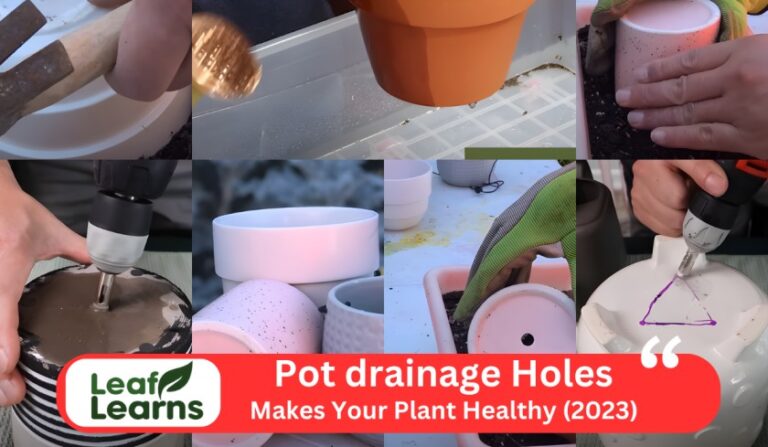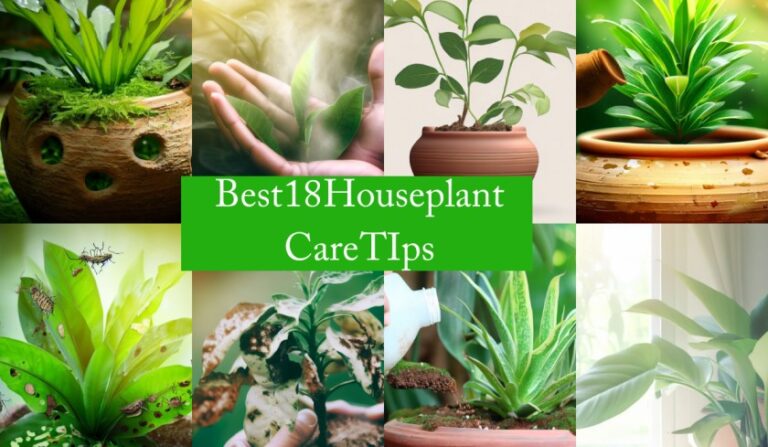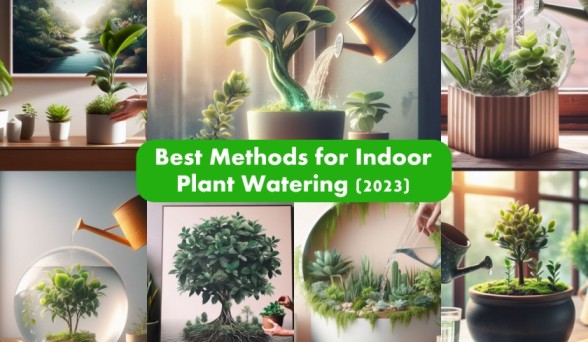How to Care for Succulents: Easy Steps (2023)
Succulents have specific needs for maintenance that affect their health, so taking good care for succulents is essential to ensure their life. In order to prevent root rot, proper care includes choosing soil that drains well and pots with drainage holes. And also keeping to a watering schedule allowing the soil to dry out between waterings in order to prevent over watering.
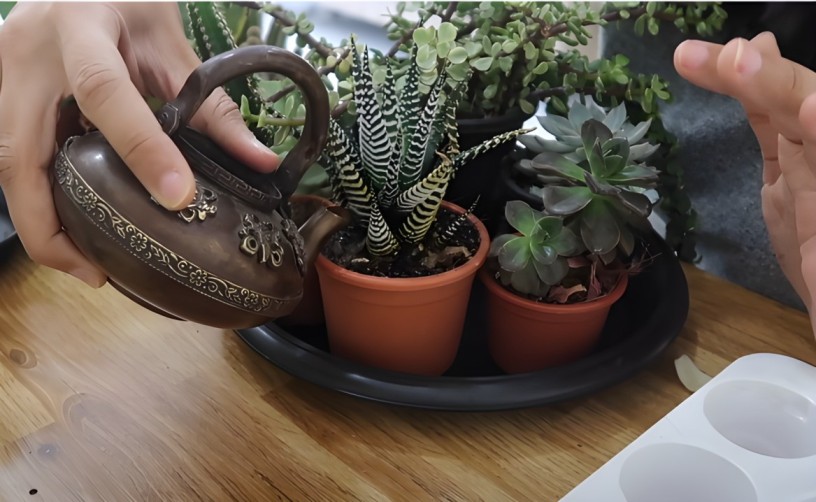
And providing enough sunlight, often in the form of bright, indirect light. Whether it’s a traditional jade plant, a vibrant echeveria, or any other succulent type, succulent individuals can help their plants flourish and indicate their unique qualities by knowing and practicing some essential care practices. So in this article i will provides you best care for succulents.
| Aspect | Care |
|---|---|
| Light | Succulents thrive in bright, indirect sunlight (6 hours daily) |
| Watering | Water sparingly,Well drained potting mix |
| Temperature | Most prefer temperatures between 60-80°F (15-27°C). |
| Soil | Use a cactus or succulent-specific potting mix. |
| Container | Use pots with drainage holes to prevent overwatering. |
| Fertilizing | Feed with diluted, balanced fertilizer during the growing season (spring and summer). |
| Pruning | Trim dead or leggy growth for a neat appearance. |
| Pests | Mealybugs and aphids. |
| Repotting | Repot when the plant outgrows its container or the soil becomes depleted |
Contents
- 1 What is a succulent?
- 2 Materials
- 3 Start with the right succulents
- 4 Care for Succulents
- 5 How to Repot Succulents
- 6 Plant Them in Containers With Drainage Holes
- 7 Keep Their Colors Vibrant by Giving Them Sun
- 8 Let Them Sleep During Winter
- 9 Avoid Glass Containers (or anything that doesn’t drain)
- 10 Rotate Succulents Frequently
- 11 Common Problems With Succulents
- 12 Common Types of Succulents
- 13 What Happens if Succulents Don’t Get Sun?
- 14 What Happens if Succulents Get More Sun?
- 15 Do Succulents Need Sun in Winter?
- 16 Essential Succulent Care Tips for All Varieties
- 17 Tailoring Care for Different Succulent Varieties
- 18 FAQs
What is a succulent?
A succulent is a particular kind of plant that can store water in its leaves, stems, or roots. The Latin word “succus,” which implies juice or sap, is where the name “succulent” comes from.
Materials
- Succulent plant
- Water
- A porous, well-draining soil
- Water-soluble fertilizer
Start with the right succulents
Start your path towards caring for succulents by choosing the appropriate kinds for your environment and degree of expertise.
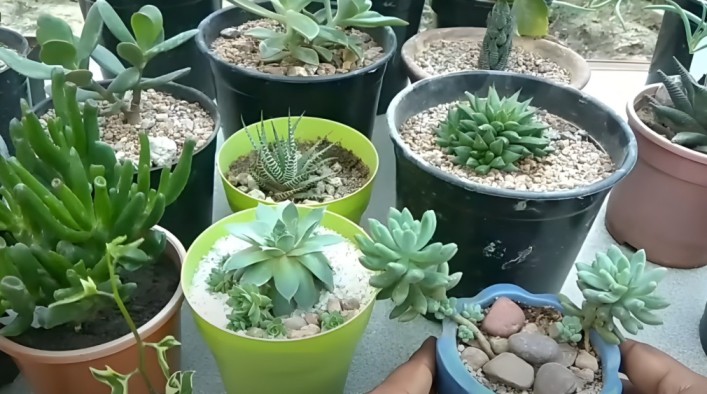
To avoid soggy roots, make sure the soil is well-draining and that the pots have drainage holes. To prevent over hydration, water infrequently, letting the soil dry in between applications.
For good growth, provide bright, indirect sunshine.
Care for Succulents
Light Requirement for Succulents
The right lighting conditions are essential for good succulent maintenance. These plants benefit from direct, bright sunshine. To guarantee their wellbeing, put them next to a window with sunshine or offer filtered sunlight.
Avoid direct, hot sunlight since it might burn its leaves. Regardless of whether you have indoor or outdoor kinds, succulents require light to grow and exhibit their brilliant splendor.
Remember that obtaining the proper amount of light is essential for their general wellbeing. This is the part of Care for Succulents.
Water Requirement for Succulents
Specific water needs for succulents are essential to their health. When you let the soil dry out completely between waterings, these tough plants flourish.
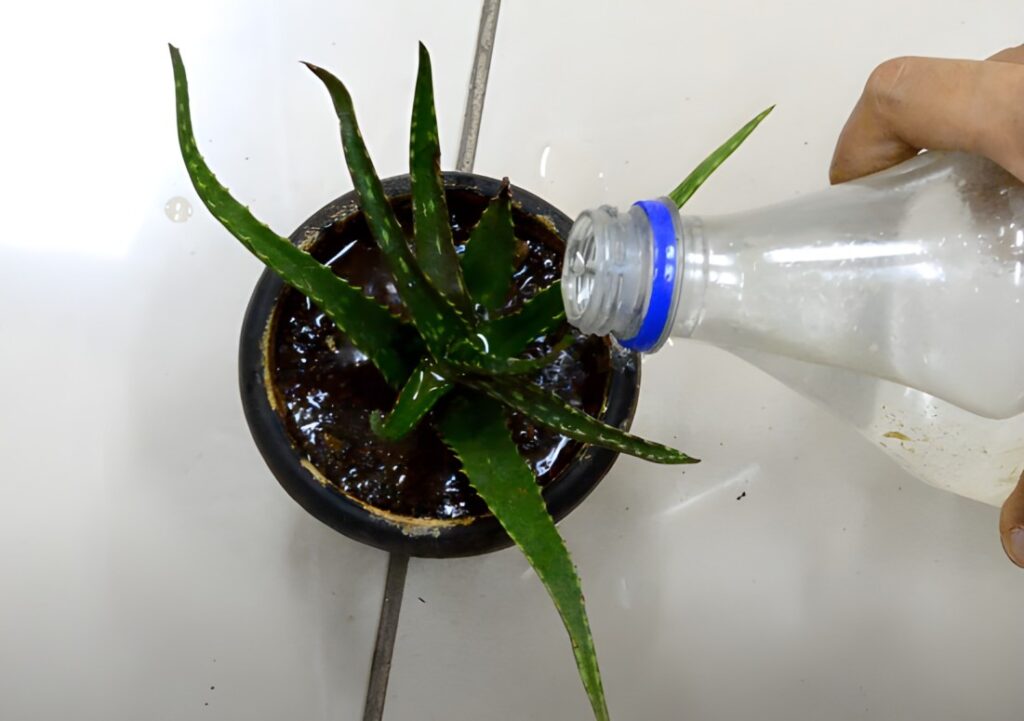
It’s important to practice discipline and give exactly the right amount of hydration because overwatering is a typical error. With this routine, you can maintain the health and vitality of your succulents, making them a low-maintenance addition to your indoor or outdoor garden.
Keep in mind that for these tough beauties, less water is sometimes more. This is the part of Care for Succulents.
Soil Requirement for Succulents
It’s essential to pay attention to the needs of the soil for efficient succulent maintenance. Because these plants don’t enjoy sitting in water, use soil that drains well and keeps water from collecting around the roots.
A good option is to combine potting mix with perlite or sand. This guarantees appropriate aeration and avoids root rot, a problem that frequently affects succulents. This is the part of Care for Succulents.
Temperature Requirement for Succulents
For the care of succulents, proper temperature regulation is essential. The optimal temperature range for succulents is between 60°F and 80°F (15°C and 27°C).
Do not expose your plants to excessive cold or heat. Protect them from frost in the winter and give them some shade in the summer. This is the part of Care for Succulents.
Humidity Requirement for Succulents
Although succulents, which are renowned for their hardiness, require little upkeep, it’s important to comprehend their humidity requirements.
These plants are suited to dry situations since they do well in low-humidity surroundings. Succulents require well-draining soil and containers with drainage holes in order to avoid water buildup. Water sparingly, letting the soil dry up in between applications. This is the part of Care for Succulents.
Fertilizer Requirement for Succulents
Although succulents require little upkeep, it is important to understand their fertilizer needs for good health. Feed your succulents throughout their active growing season, which is often spring and summer, to keep things easy.
Use a liquid fertilizer that is balanced and diluted, and apply it sparingly every 4-6 weeks. Overfertilizing should be avoided as it might hurt your plants. This is the part of Care for Succulents.

Pruning Requirement for Succulents
Succulents are low-maintenance plants, but it’s important to comprehend how to prune them. Your succulents will remain healthy and attractive if you prune them regularly.
Start by carefully picking up any dead or dried-up leaves or cutting them off with pruning shears. To promote bushier, more compact shapes, trim down lanky growth. Pruning also aids in the eradication of any pests or disease-prone regions.
Succulents are tough plants, so don’t be afraid to trim them when necessary for healthy development and attractiveness.
How to Repot Succulents
- For your succulent, use a somewhat bigger pot with drainage holes.
- Create a potting mix for succulents or cacti that drains effectively.
- Remove the succulent from its present container gently, taking mindful to protect the roots.
- Shake off any extra soil, then look for any rot or disease symptoms.
- Put the succulent in the new container and cover it with fresh dirt.
- Before watering, let the newly-repotted succulent settle for a few days.
- In the next weeks, water carefully to avoid stress from overwatering.
Plant Them in Containers With Drainage Holes
Planting succulents in pots with drainage holes is the first step in providing them with proper maintenance. This enables surplus water to drain away, avoiding root rot and providing enough soil aeration.
A soil that drains well is necessary for good growth. Remember to water these tough plants infrequently, letting the soil entirely dry out in between applications.
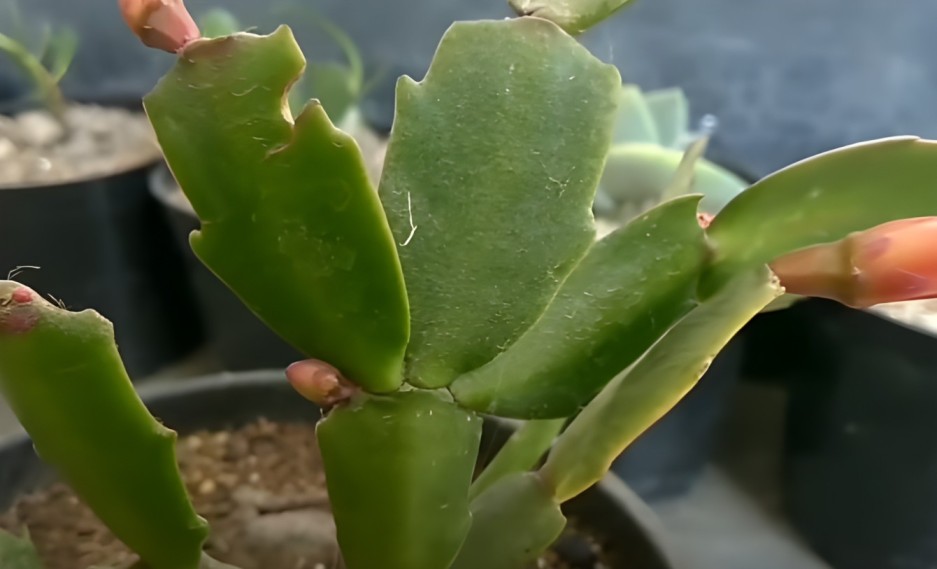
Keep Their Colors Vibrant by Giving Them Sun
Succulents are simple to care for; all they need is plenty of sunlight. Place them in a sunny area, particularly one that receives bright, indirect sunlight, to keep their colors vibrant.
When exposed to natural light, succulents may photosynthesize and display their stunning colors.
Let Them Sleep During Winter
To survive, succulents need a period of hibernation throughout the winter. Reduce watering to once a month when the weather becomes colder, letting the soil dry out in between.
Put them in a shaded area with a cooler climate. This essential rest time simulates the circumstances of their native habitat and promotes robust development during the warmer months.
Avoid Glass Containers (or anything that doesn’t drain)
It’s imperative to refrain from utilizing glass containers as plant homes in order to promote good succulent development.
Glass containers don’t have enough drainage, which might result in too much moisture, root rot, and stressed plants. Instead, use containers with drainage holes that let water run off and stop problems with the roots.

Rotate Succulents Frequently
Succulents should be rotated often to encourage good development. This straightforward procedure ensures that they receive equal exposure to sunshine and stops them from bending or straining in one particular way. Turning your succulents every so often promotes healthy growth and colorful foliage.
Common Problems With Succulents
Problem: Overwatering can lead to root rot and mold growth.
Solution: Between waterings, let the soil completely dry out, and make sure the container has enough drainage.
Problem: Insufficient light causes stretched and weak succulents.
Solution: Provide bright, indirect sunlight or use grow lights for indoor succulents.
Problem: Pests like mealybugs and aphids can damage succulents.
Solution: To avoid infection, segregate the afflicted plants and treat them with neem oil or soapy water.
Problem: Poor soil drainage leads to waterlogged roots.
Solution: Use well-draining succulent potting mix and pots with drainage holes.
Problem: Root-bound succulents outgrow their containers.
Solution: Repot into a slightly larger pot to promote growth.
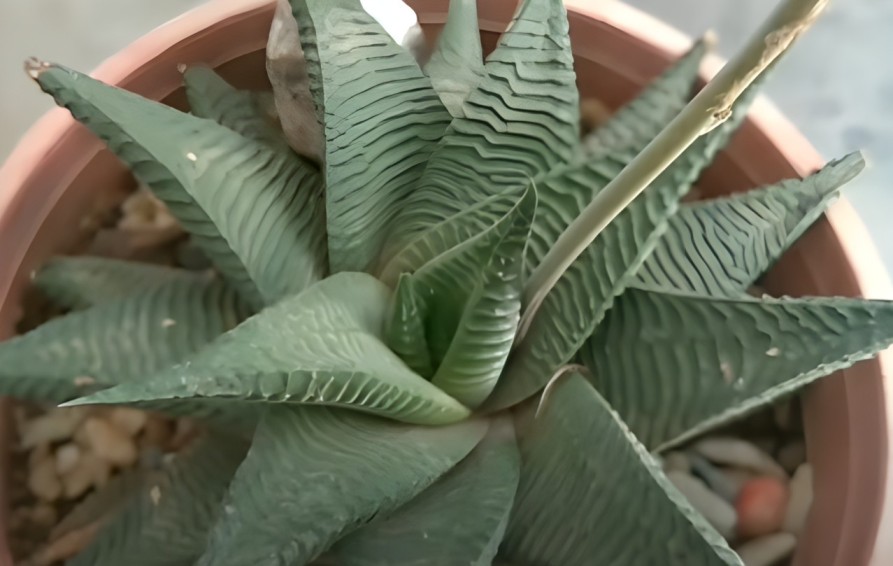
Common Types of Succulents
- Sempervivum (Hens and Chicks): Known for their rosette shape, they thrive in well-drained soil and bright sunlight.
- Echeveria: These rosette-shaped succulents come in various colors, perfect for both indoor and outdoor gardens.
- Aloe Vera: Aloe vera, well known for its healing abilities, needs little maintenance and enjoys indirect sunshine.
- Sedum: With various species, sedums are versatile and low-maintenance succulents, ideal for ground cover.
- Crassula (Jade Plant):Jade plants are popular for their vivid green leaves and are simple to grow. They also have a long lifespan.
Haworthia: These small, spiky succulents thrive in indirect light and are great for beginners.
What Happens if Succulents Don’t Get Sun?
Succulents can lose their compact form and grow lanky and stretched as a result of inadequate sunlight. In addition, they could exhibit etiolation-related symptoms including pale or yellowish growth.
Make sure your succulents get enough bright, indirect sunshine so they can develop and look their best. This will keep them healthy.
What Happens if Succulents Get More Sun?
The vibrant hues of succulents deepen when they are exposed to ample sunlight, and growth flourishes as well. Increased sun exposure enhances photosynthesis, fostering plants that are resilient and healthy. Excessive sun exposure can cause sunburn, so you want to make sure your succulents are gradually acclimated to sunlight, ensuring they thrive in the perfect combination of light and shade.
Do Succulents Need Sun in Winter?
Yes, Succulents still need sunshine in the winter, although the amount depends on the species. Some succulents may handle lower light levels, while many prefer bright, indirect light.
To make sure your succulents get enough sunshine to be healthy over the winter, it’s critical to monitor them and change where they’re placed.
Essential Succulent Care Tips for All Varieties
Caring for succulents can be a rewarding and straightforward experience. Whether you’re a beginner or an experienced gardener, knowing how to care for your succulents is essential. Succulents are known for being some of the easiest plants to care for, thanks to their ability to store water in their leaves.
To ensure the health of your succulents, start with well-draining soil and pots with drainage holes. When it comes to watering, let the soil dry out completely between waterings, and be sure not to overwater. Additionally, providing them with bright, indirect sunlight is key to their growth.
Whether you’re tending to indoor or outdoor succulents, these care tips apply to all types of succulents, from the common jade plant to unique varieties like crested succulents and echeveria.
Tailoring Care for Different Succulent Varieties
Succulents come in a wide variety of shapes and sizes, and each type may have specific care requirements. For instance, if you’re caring for hen and chicks succulents or baby toes succulents, ensure they receive ample sunlight and avoid overwatering, as these species are more sensitive to moisture.
When it comes to cacti and succulents, indoor or outdoor, remember to follow similar care guidelines: well-draining soil, infrequent watering, and appropriate lighting conditions. Whether you’re nurturing a Christmas cactus while blooming or trying to revive a succulent not blooming, adjusting your care routine can make a significant difference.
Finally, if you’re facing winter care for succulents, it’s crucial to adapt to the seasonal changes by reducing watering and protecting them from frost. By understanding the unique needs of your succulent varieties and adapting your care accordingly, you can enjoy a thriving succulent garden year-round.
FAQs
What’s the first step in caring for succulents?
Start with the appropriate succulents for your environment and amount of experience.
How much sunlight do succulents need?
Succulents thrive in bright, indirect sunlight, but avoid intense, direct sunlight.
What is the key to watering succulents?
To avoid overwatering, let the soil entirely dry out in between waterings.
Why is well-draining soil important for succulents?
Healthy development is ensured by well-draining soil, which prevents soggy roots and root rot.
What is the ideal temperature range for succulents?
Succulents thrive in moderate temperatures between 60°F to 80°F (15°C to 27°C).
Why is pruning essential for succulent care?
Pruning helps maintain succulents’ health, appearance and prevents pest issues.
What are the steps to repotting succulents?
Choose a larger pot with drainage, prepare well-draining soil, gently remove the plant, and allow it to settle before watering sparingly.
How can you maintain vibrant succulent colors?
To keep succulents bright, give them enough sunshine, soil that drains properly, and appropriate watering.
What should you do with succulents during winter?
Reduce watering and put them in a cooler area with some shade so they may rest.
Why should you avoid using glass containers for succulents?
Glass containers lack drainage, leading to excess moisture and plant stress.
Why is it important to rotate succulents?
Succulents benefit from regular rotation to promote uniform sunshine exposure and healthy development.
What are some common problems and solutions for succulent care?
There are particular ways to keep succulent plants healthy, including addressing overwatering, inadequate lighting, pests, poor soil drainage, and rootbound plants.
Can you name a few common types of succulents?
Common succulent varieties include Sempervivum (Hens and Chicks), Echeveria, Aloe Vera, Sedum, Crassula (Jade Plant), and Haworthia.

